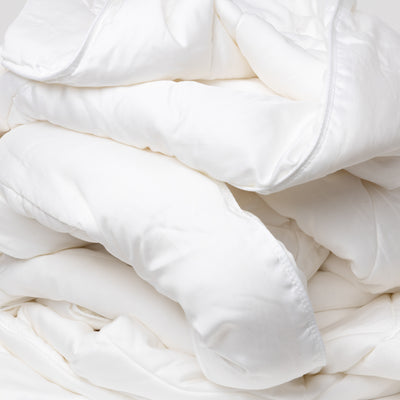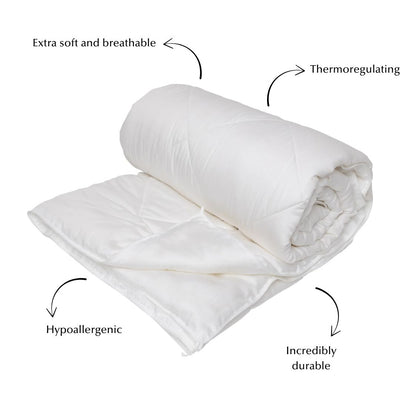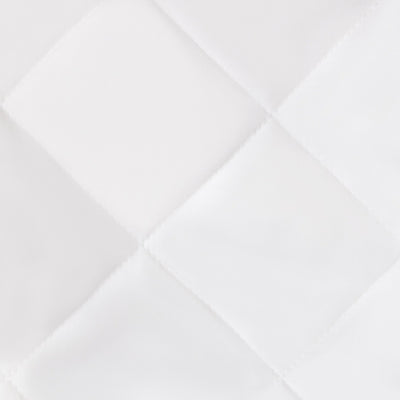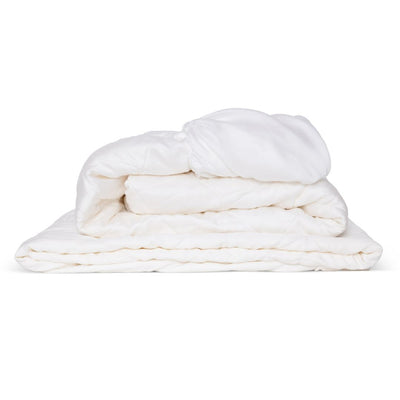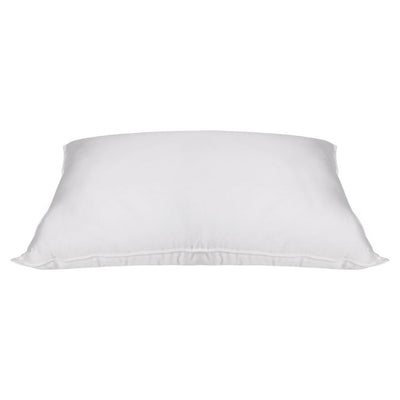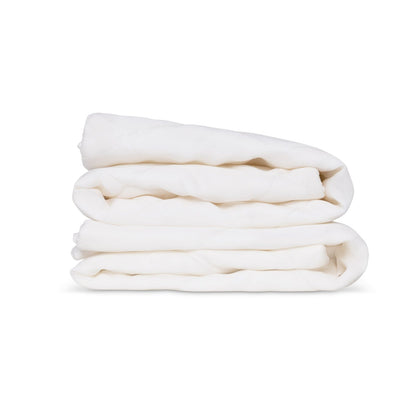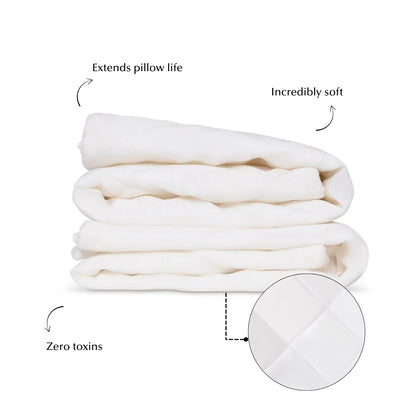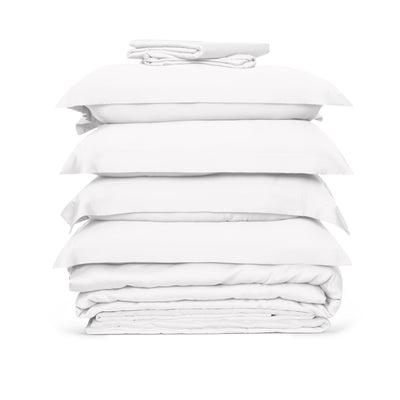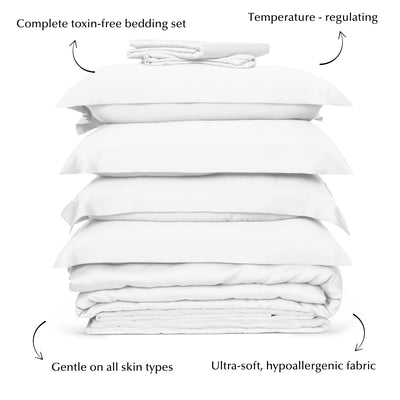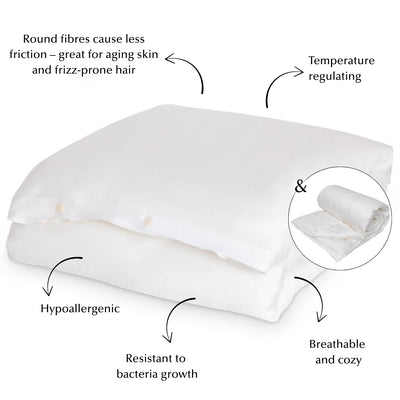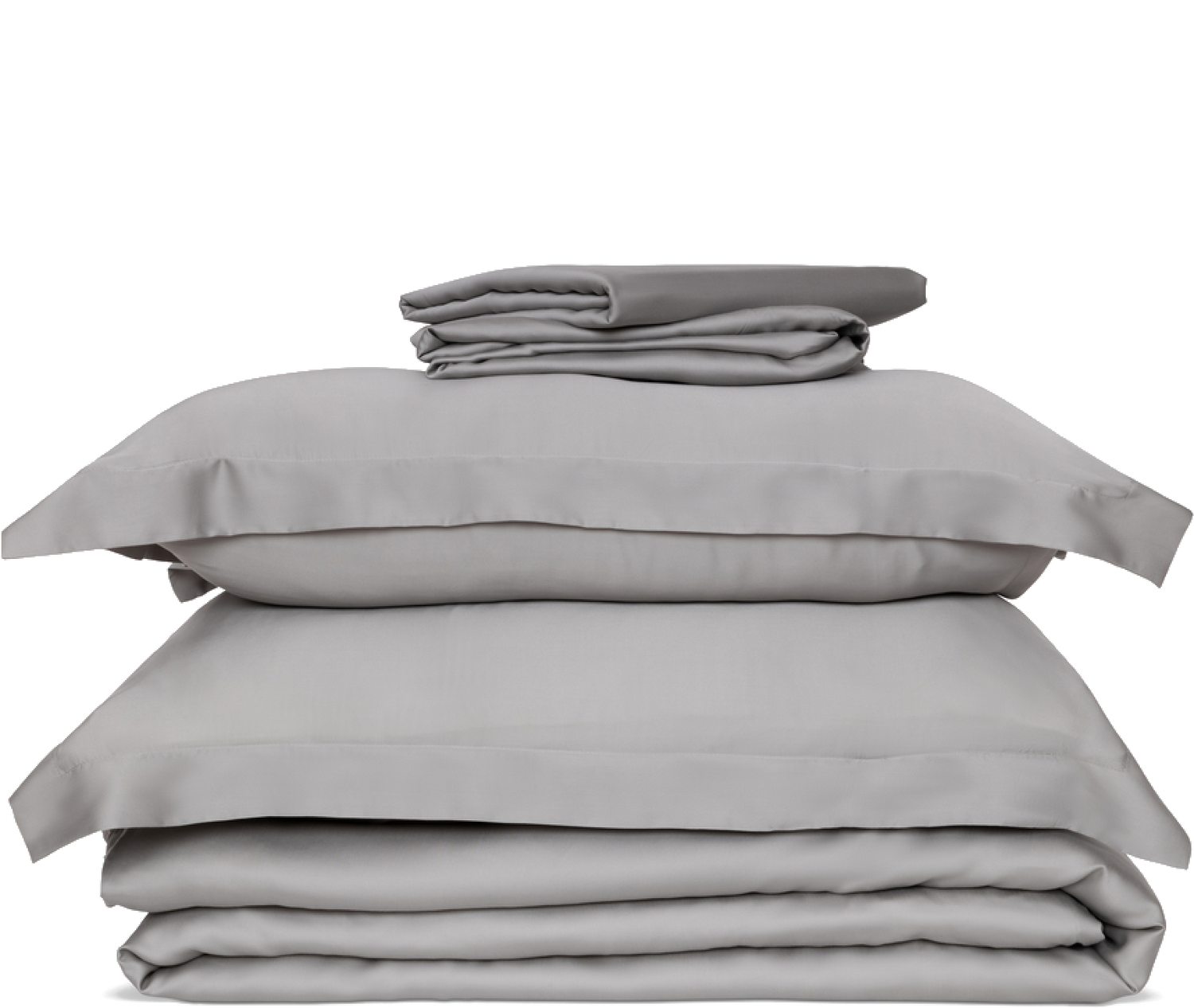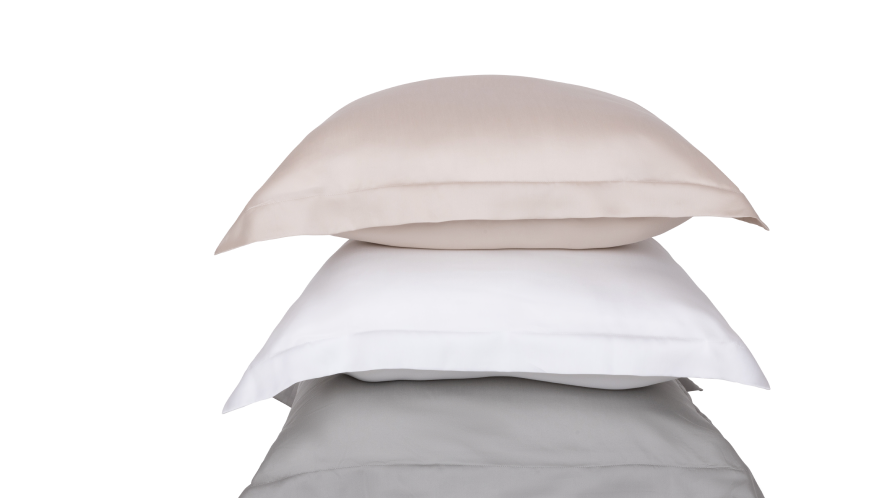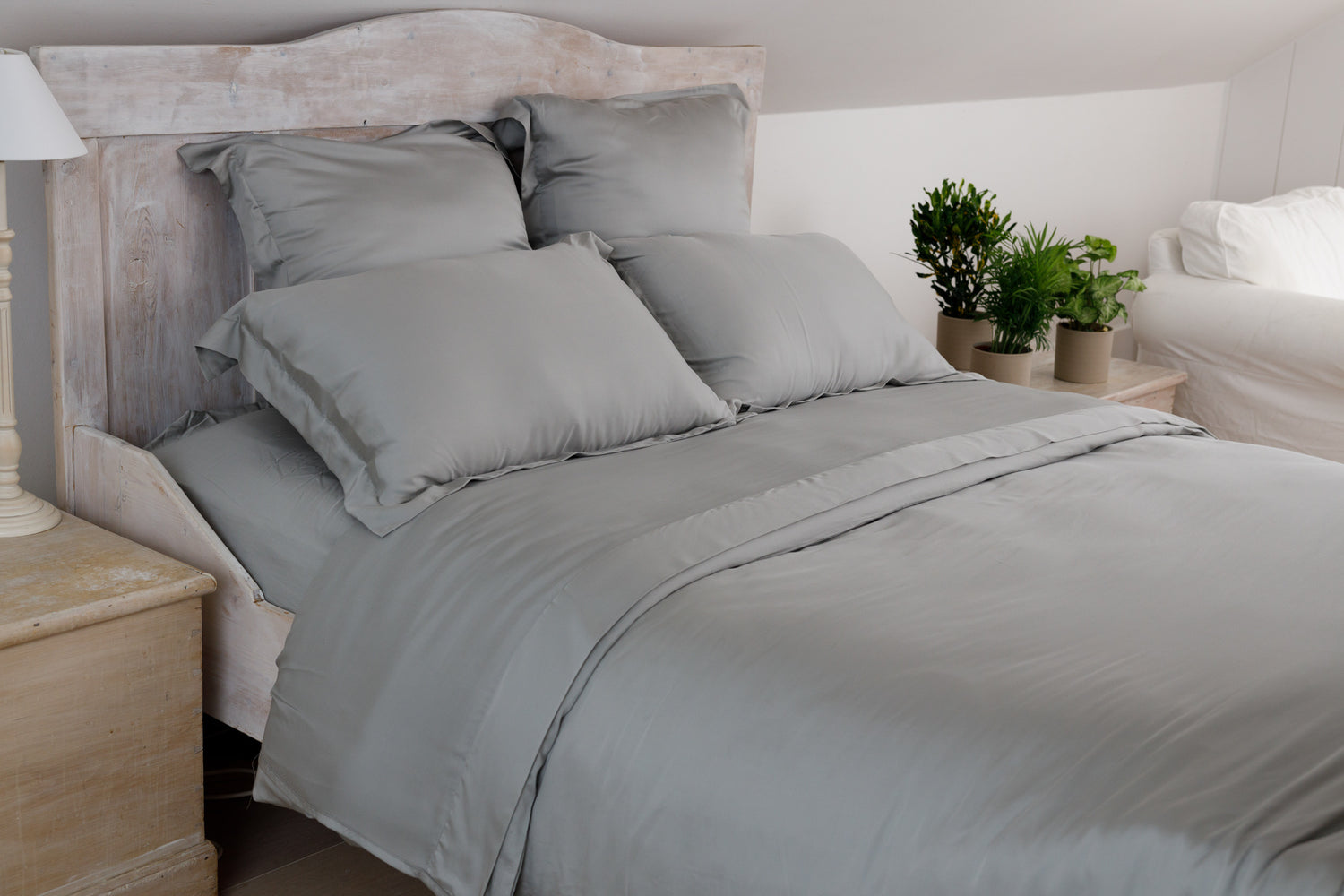Since ancient times, both silk and satin have been symbols of luxury and aristocracy, with each of these incredibly smooth fabrics dominating royal palaces, wealthy households, and celebratory venues around the world.
And, when used for clothes, silk and satin once again frequent the wardrobes of affluent individuals and monarchs; evening gowns and bridal dresses capitalize on their luxe feel, as well as decorative drapes, throws, and nightwear.
But what is the difference between silk and satin bedding?
While silk is a fabric produced by the domesticated silkworm (or Bombyx mori), satin refers to the weave of the fabric, rather than the actual material. Read on to delve deeper into the differences between satin vs silk, including the pros and cons, and why you might want to consider eucalyptus silk instead.
What is silk?

As far as silk’s origins go, the fibre is believed to have accidentally been discovered around the year 3000 BCE by the then-Chinese Emperor’s concubine Lei Zu when a silkworm fell into her cup of tea and she was astonished at the soft, silky strands of the cocoon.
As a result, she invented the very first silk loom, which allowed the Chinese to produce silk and ship it throughout the world.
For hundreds of years, the Chinese dominated the silk trade, shipping their products throughout Western Europe along the famous Silk Road network.
Even to this day, China continues to be the world’s leading producer in the US$21.45 billion silk industry, with other top silk-producing countries including India, Thailand, Brazil, and Vietnam.
What are the pros and cons of real silk?
We know silk bed sheets are favoured for their luxury and beautifully soft fibres, but what are the other benefits of this smooth and delicate fabric – and does it have any drawbacks?
The pros of real silk
Silk is a soft fabric with a long list of benefits. We’ve outlined those you might be most interested in.
- Natural: Silk is a natural fibre sourced form silk worms, and is therefore produced without the need for harmful chemicals.
- Strength: The soft, delicate look and feel of silk is misleading, and, in fact, pound for pound, silk is even stronger than steel. Some silk from spiders is so strong that they can even snag small birds as prey. As a result, silk bedsheets are extremely durable when looked after correctly.
- Temperature regulating: Is silk breathable? Yes - silk is a breathable, and temperature regulating fibre that will keep you warm in cool climates, as well as cool you down when the temperatures rise.
- Moisture wicking: Alongside being an excellent temperature regulator, silk also has great moisture wicking properties, designed to keep you dry on even the warmest evenings; making it a great choice if you’re prone to night sweats!
- Hypoallergenic: Silk is created from naturally antibacterial, antimicrobial, and hypoallergenic fibres, making it ideal for people with allergies. Silk is produced from the cocoons of silkworms, which have naturally evolved to repel mites and insects, while the fibres are also resistant to pollen and dust.
- Non-irritating: As well as being naturally hypoallergenic, silk bed sheets are ideal for even the most sensitive skin, with the soft fabric even suitable for babies and those with underlying skin conditions such as eczema or acne.
- Hair care: Silk thread contains useful amino acids, meaning scarves and silk pillowcases are increasingly used for hair care. The reduced friction from the smooth fabric causes less hair breakage, frizziness, and split ends.
- Biodegradable: Being a natural product, silk that ends up going to landfills will break down in one to five years. In stark contrast, polyester takes up to 200 years to decompose.
The cons of real silk
Silk has a long list of benefits, but it’s important to be aware of the fibre’s handful of drawbacks if you’re to make an informed decision when investing in your next set of bedding.
- Non-vegan: The silkworms used to make silk are boiled alive in their cocoons. It takes about 2,500 silkworms to produce a pound of silk.
- Requires care: While silk is soft and luxurious, it requires real care when it comes to washing and maintenance. You should wash your silk bedding either by hand or on a cold wash to avoid damaging the fabric, while you should never dry your sheets in direct heat or sunlight.
- High carbon footprint: Silk has a relatively large carbon footprint. It is produced predominantly in China and India, making shipping to the west resource-intensive. In addition, silkworm farms are located in hot climates and require vast amounts of energy for temperature control.
- Expensive: Prized as a luxurious fabric for thousands of years, silk continues to be priced at a premium. The quality of silk is measured by a Japanese unit called a “momme”. A momme measures the weight of the silk; the heavier the fabric, the higher the momme. Some luxurious 30-momme bed sets sell for over £1,000!
What is satin?

After silk’s rise to prominence as the world’s most luxurious fabric, the Chinese developed the weaving technique of silk into satin. It is believed that satin derives its name from the Chinese town of Zaitun, exported to the west during the time of Ancient Greece and arriving in Europe during the Middle Ages.
A satin weave is achieved by four or more weft threads over one warp thread or the other way around - four warp threads going over one weft. To do a satin weave, long, continuous fibres are used.
While, previously, only silk was used for satin weaves, modern-day satin sheets can be made from synthetic fabrics like rayon, nylon, and polyester.
Satin bedding is typically recognised as being glossy on one side and dull on the other, although there are several types of satin depending on the fabric used and how it was weaved.
What are the pros and cons of satin?
We’ve explained how satin is produced to create a luxury fabric similar to silk, but what are the other benefits of satin – and potential drawbacks?
The pros of satin
Like silk, satin is a soft and luxurious fibre that’s often used for clothing and bedding. We’ve highlighted the benefits of satin bedding, to give you a better idea of why you might want to invest in the popular fabric.
- Affordable: Smooth and lustrous, satin offers the luxurious glossy look of silk at affordable prices. In short, satin is typically cheaper than silk.
- Appearance: One of the most obvious benefits of satin is that it has the same shiny, sleek appearance of authentic silk, giving your bedding a similarly luxurious and impressive aesthetic.
- Hypoallergenic: Satin manufactured from silk is hypoallergenic and doesn’t absorb moisture like cotton does.
- Hair care: Satin that’s made of synthetic fibres is more glossy and slippery than silk. When buying satin pillowcases, your hair will be protected by reduced friction between individual hair strands.
- Low absorbency: Satin’s lack of absorbency is kinder on the skin than other types of bedding fibre. Absorbent fabrics like cotton strip the skin of oils and moisture, leading to wrinkles and fine lines. However, satin made of silk is ever so slightly more absorbent than synthetics, meaning the fibres can be used for headscarves if you have an oily scalp.
- Delicate: Some folks might prefer the feel of satin for undergarments, nightclothes, and bedding because of its breathable, delicate qualities.
- Sensitive: Is satin good for skin? Yes - synthetic satin will suit people with sensitive skin, just like silk.
- Vegan: Synthetic satin can be kinder for silkworms and can be a vegan product.
The cons of satin
Once again, similarly to real silk, satin also has a handful of drawbacks you should be aware of. We’ve outlined the most important cons of satin bedding below.
- Easily stained: Satin sheets have a smooth, delicate surface that can get stained with water spots. As such, satin cannot be steam-ironed, or else you might end up seeing water stains after drying.
- Slippery: Satin is so slippery that when sewing, threads may slip, and mistakes can be made. The slippery fibres may also not be to your preference, if you’re choosing new bedding.
- Easily snagged: The individual satin fibres can get snagged easily with threads caught in the weave.
- Warmth: Is satin breathable, just like silk? In short, not quite. And, here, we also provide an answer to the common question ‘does satin make you sweat?’. Satin is typically manufactured to hold heat, which, while keeping you cosy during the winter months, can lead to overheating during the warmer seasons.
The difference between satin and silk
The table below outlines a side-by-side comparison of silk vs satin, making it easy to compare the pros and cons we’ve outlined above.
|
PARAMETERS OF COMPARISON |
SATIN |
SILK |
|
Origin |
Satin came into existence during the Middle Ages. |
Silk came into existence in China over 5000 years ago. |
|
Manufacturing |
Satin can be produced from silk, cotton, nylon, polyester, viscose, and rayon. |
Silk is derived from cocoons of silkworms and is a purely natural fabric. |
|
Appearance |
Satin has a shiny, glossy front surface and a dull back surface. |
Silk has a shiny, glossy appearance on both sides and a luxurious feel. |
|
Washing care |
Satin needs careful washing and might have to be dry cleaned. You cannot wash synthetic satin in hot water because it might warp the fabric. |
Silk can be washed on a delicate cycle, or hand washed. |
|
Temperature regulation |
Because satin is a man-made fibre, and often synthetic, it lacks the same breathability you find with silk, and so doesn’t regulate temperature quite as effectively. |
Silk is a natural temperature regulator, thanks to the tube-like fibres that allow air to efficiently flow through. |
|
Moisture absorption |
As a man-made and often synthetic material, satin is non-absorbent. |
Silk is a moisture-wicking fibre that keeps you dry at night, while discharging sweat and oils. |
|
Comfort |
Satin is admired for its soft luxury and exceptional quality, but it doesn’t quite match silk in terms of breathability and comfort. |
Silk is a luxurious fabric that’s long-been a symbol of high-quality comfort that offers a breathable and soft sleeping surface. |
|
Skin sensitivity |
Because satin can be manufactured from a combination of fabrics, it’s not always hypoallergenic and isn’t always suitable for all skin types. |
Silk is ideal for all types of skin sensitivity, including babies and people with skin conditions like eczema. |
|
Cost |
As satin can be manufactured using a natural or synthetic blend of fibres, it’s more affordable than silk. |
Due to its popularity and long-standing reputation as a luxury fibre, silk can be among the costliest of fabrics. |
Now you’re aware of the differences between silk and satin bedding, you can more-easily make an informed choice between the two. But did you know, they’re not the only materials available for a soft night’s sleep and luxury aesthetic?
At Ethical Bedding, we provide an alternative solution to both silk and satin; one that offers the same luxury and soft feeling while following environmentally-friendly and sustainable practices.

Shop Ethical Bedding's Luxurious Eucalyptus Silk Bed Sheets and Sets
Our eucalyptus silk is sourced from fast-growing eucalyptus trees grown in our biodiverse forests, and manufactured following a closed-loop process that recycles waste water.
Explore our complete range of ethical bedding, ranging from bed sheets to pillowcases, or check out even more helpful insight from our sleep experts over on our blog.

